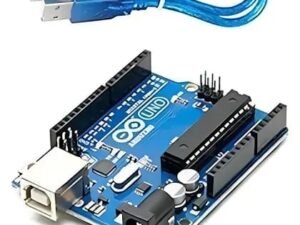No products in the cart.
Python AI/ML Based Projects
Crop disease detection using Python AI
Availability:
10 in stock
The Crop Disease Detection using Python AI project focuses on identifying and diagnosing plant diseases to prevent crop loss. This system leverages machine learning algorithms to analyze images of leaves, stems, or fruits and detect signs of disease. By training the model on a dataset of healthy and diseased crops, it can classify new images and provide accurate predictions. The project typically involves using libraries like TensorFlow or PyTorch for building the AI model, along with OpenCV for image processing. This tool helps farmers take early action, improving crop yield and sustainability.
₹10,325.00 ₹12,390.00 (Incl. GST)
10 in stock
Crop disease detection using Python AI
The Crop Disease Detection using Python AI project is designed to assist farmers and agricultural experts in identifying diseases in crops at an early stage. Early detection is crucial as it allows timely intervention, potentially saving large portions of the crop and reducing economic losses.
Project Overview
This project uses artificial intelligence, particularly machine learning (ML), to analyze images of crops and detect signs of disease. The system is built using Python, which offers a rich ecosystem of libraries and tools for image processing, machine learning, and deep learning.
Crop disease detection using Python AI – Key Components
- Image Dataset: The project begins with gathering a large dataset of images that includes both healthy and diseased plants. These images should cover various types of crops and diseases to ensure the model can generalize well across different scenarios.
- Data Preprocessing: The images undergo preprocessing to improve model accuracy. This includes resizing images, normalization, and data augmentation (like rotating, flipping, or zooming) to create a more robust model that can handle various orientations and lighting conditions.
- Model Selection: The core of the project is the machine learning model. Convolutional Neural Networks (CNNs) are typically used for image classification tasks due to their effectiveness in recognizing patterns and features in images. Libraries like TensorFlow or PyTorch can be used to build and train these models.
- Training the Model: The model is trained using the preprocessed images. During training, the model learns to distinguish between healthy and diseased crops by identifying patterns associated with each condition. The training process involves iterating through the dataset multiple times (epochs) and adjusting the model’s parameters to minimize error.
- Validation and Testing: After training, the model is validated and tested on a separate set of images that were not used during training. This step is crucial to ensure the model can generalize to new, unseen data and isn’t just memorizing the training dataset.
- Prediction: Once the model is trained and tested, it can be used to predict the health status of crops in new images. Farmers can upload pictures of their crops, and the system will analyze them and predict whether the crops are healthy or diseased.
- User Interface: For practical use, the system can be integrated into a mobile or web application. This interface allows users to upload images, view results, and get recommendations on how to treat any detected diseases.
Technical Details
- Libraries Used:
- TensorFlow/PyTorch: For building and training the CNN model.
- OpenCV: For image processing tasks.
- NumPy and Pandas: For data manipulation and handling.
- Matplotlib/Seaborn: For visualizing the data and model performance.
- CNN Architecture: A typical architecture might include multiple convolutional layers followed by pooling layers, fully connected layers, and an output layer with softmax activation for classification.
- Training Parameters: Key parameters include learning rate, batch size, number of epochs, and optimizer choice (e.g., Adam, SGD).
Crop disease detection using Python AI – Benefits
- Early Disease Detection: Enables timely intervention, reducing the impact of diseases on crop yield.
- Cost-Effective: Minimizes the need for frequent manual inspections and laboratory testing.
- Scalable: Can be expanded to include more crops and diseases as new data becomes available.
Challenges
- Data Quality: High-quality, diverse datasets are crucial for training an effective model.
- Model Generalization: The model must generalize well to different crops and environments, which may require extensive training data.
- Computational Resources: Training deep learning models requires significant computational power, especially for large datasets.
Conclusion
The Crop Disease Detection using Python AI project represents a significant step forward in modernizing agriculture. By leveraging AI, farmers can detect crop diseases early, allowing for quick and effective treatment, ultimately leading to better crop management and higher yields. As AI technology continues to evolve, such systems will become even more accurate, accessible, and integral to farming practices worldwide.
| Weight | 0.00 kg |
|---|---|
| Dimensions | 0.00 × 0.00 × 0.00 cm |






There are no reviews yet.